Sun Exposure Dos and Don’ts: Enjoy the Summer Sun Safely!
Sun exposure can boost your mood and help balance vitamin D, but frequent sun exposure can also damage the skin. Use these tips for safe sun exposure!
Nature beckons you outside for a summer full of fun! Soaking up the sun can boost your mood and help balance vitamin D, but frequent overexposure to unprotected ultraviolet radiation (UV) from the sun can damage the skin.
Subscribe to my YouTube Channel for more healthy recipes, lifestyle tips and more!
Affiliate Discloser & Privacy Policy (please review our complete policy here): we use affiliate links and analytics on our website, social media posts and newsletter which utilize cookies placed on your browser to track sales activity. This post is NOT sponsored but may contain affiliate links. When you click an affiliate link on our Website, a cookie will be placed on your browser to track sales activity. When you click these links and purchase a product, we may receive a small commission to help support the maintenance of our website, but the price is the same for you. Users can control the use of cookies at the individual browser level. Please review our complete privacy policy here. Thank you for your support! These statements have not been evaluated by the FDA and should not be considered medical advice or treatment. Please consult your personal health provider before making any changes to your diet or lifestyle.
The Bright Side of Sunshine
On the bright side, you can derive health benefits from balanced sun exposure. Sun exposure plays an important role in regulating circadian rhythms, contributing to deep sleep, boosting hormones like vitamin D and maintaining a balanced mood. Spending moderate time in the sun has also been shown to contribute to health by providing pain-reducing (analgesic) properties and helping to regulate metabolism.[1]
Vitamin D is a critical steroid hormone which acts on receptors throughout the body, influencing bone health, heart function and inflammation. Vitamin D is unique because it can be made in the skin from exposure to sunlight. When UVB rays from the sun strike exposed skin, the body can synthesize vitamin D3 which is then transformed by the liver and kidneys into the biologically active hormone.[2]
Vitamin D insufficiency affects almost 50% of the population worldwide.[3] Emerging research suggests that natural sun exposure may regulate vitamin D in a way that supplements cannot mimic. For example, vitamin D produced in the skin may last at least twice as long in the blood compared with ingested vitamin D.[4]

The Dark Side of Sun Exposure
Sunlight includes rays of invisible ultraviolet light of varying wavelengths which can contribute to sunburn, accelerated skin aging and skin cancer. The majority of UV radiation reaching the Earth’s surface is UVA which penetrates more deeply into the skin where it can indirectly damage DNA via the generation of free radicals.[5] UV radiation can also damage collagen and accelerate aging of the skin as well as contribute to cataracts.
Like most things related to health, bioindividuality and lifestyle habits are important when it comes to sun exposure. Certain groups are more susceptible to the negative impacts of UV sun exposure and may require different strategies to avoid harm.
For example, those with certain autoimmune conditions such as lupus can be exceptionally sun sensitive. Further, medications such as tetracycline antibiotics, can increase sun sensitivity.
While adequate vitamin D levels can help prevent cancer and not all skin cancers are related to sun exposure, some people are particularly prone to UV damage. People with a personal or family history of skin cancer or other genetic susceptibilities which make it more difficult to repair UV-induced DNA damage need to be more vigilant to avoid too much sun exposure.
Dos and Don’ts of Sun Exposure
To safely enjoy the sun and receive these health benefits while preventing overexposure and damage, there are some important considerations. Adjust these approaches based on your individual needs, lifestyle and susceptibilities.
Pin it!
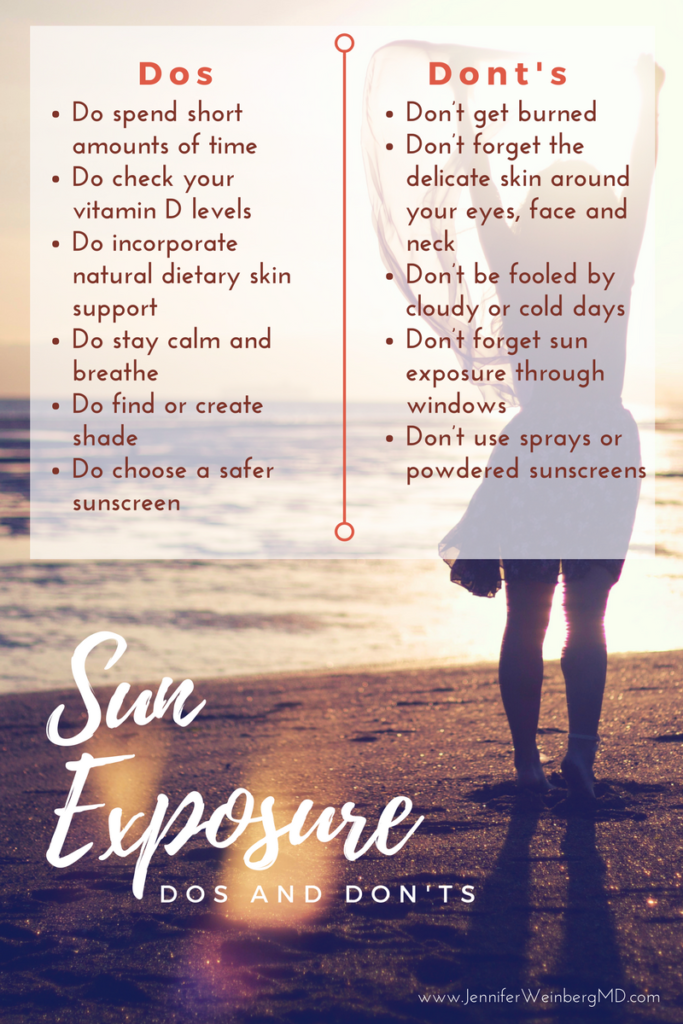
Dos for Healthy Sun Exposure
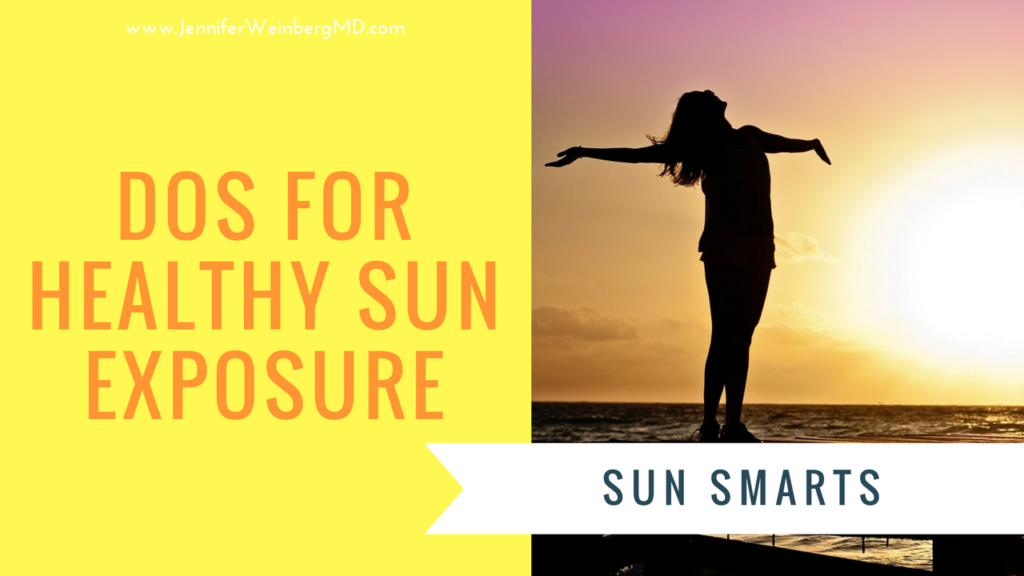
- Do spend short amounts of time (10-20 minutes) exposing unprotected skin to the sun at times of the year and day when UVB rays are optimal for vitamin D production. Despite common recommendations, the best time for sun exposure is around noon when UVB rays are most likely to reach your skin and boost vitamin D production and UVA rays which increase the risk of skin cancer and photodamage are minimized.[6]
- Do have your doctor check your vitamin D levels especially if you live at a more northern location and during the winter when not enough UVB rays reach you to produce adequate vitamin D from the sun.
- Do incorporate natural dietary skin support. Many of the fresh healthy foods available in summer also fortify you as a sort of internal sunscreen. For example, a mix of carotenoids including lycopene (in tomatoes and watermelon), lutein (in spinach and other dark green veggies), and beta-carotene (in orange, red, and yellow produce) reduce skin’s susceptibility to ultraviolet damage.[7] Astaxanthin, a carotenoid pigment found in microalgae and seafood which consumes this algae like salmon, shellfish and krill, also contributes to skin health.[8]
- Do stay calm and breathe. Stress reduction helps to boost the skin’s UV resiliency. Stress weakens the immune system and makes you more susceptible to free radical damage which can lead to cancer.[9] Adopting regular stress management practices such as meditation, yoga and mind-body practices like those in The Whole Cure (affilaite link) make you more resilient to resist the damaging impacts of chronic stress, including sun damage and skin cancer.
- Do find or create shade. One of the best ways to enjoy a sunny day without suffering damage is to minimize your time spent in the strongest rays. This means staying in the shade when possible to avoid extensive time in strong sun and wearing lightweight, long-sleeved shirts, pants and wide-brimmed hats.
- Do choose a safer sunscreen. Sunscreen provides either a chemical or physical barrier against the sun’s rays. When choosing a sunscreen, ingredients matter to ensure adequate protection without harmful endocrine-disrupting chemicals. Some toxic ingredients to look for and avoid include oxybenzone, octinoxate, retinyl palmitate (a form of vitamin A) and homosalate which can alter hormones and/or cause skin irritation. Synthetic fragrances should also be avoided in all personal care products including sunscreens. These chemicals such as parabens, phthalates and synthetic musks are linked to endocrine disruption, reproductive impacts and even cancer.[10] Instead, look for non-nano physical or mineral-based sunscreens like zinc oxide with an SPF no less than 15.
- This is one of my favorite healthy sunscreens (affiliate link)
Don’ts to Avoid Damage from the Sun
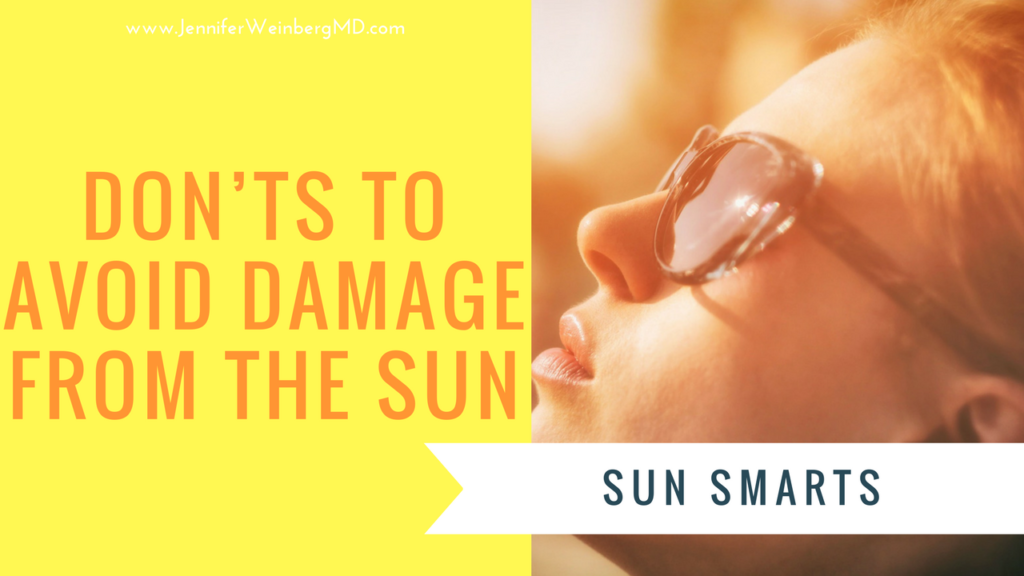
- Don’t get burned. Avoid excessive sun exposure which leads to redness, blistering or pealing skin. This is a sign of too much sun exposure leading to DNA damage which can contribute to your risk of skin cancer.
- Don’t forget the delicate skin around your eyes, face and neck. A good hat with a wide, protective brim or neck guard(affiliate link) is one of the best ways to protect the delicate skin of your face and neck. Sunglasses (affiliate link) are also crucial for protecting the eyes from UV damage. Look for the label UV400 or Blocks 99-100% of UV Rays and wrap style sunglasses which block UV rays from all sides. It is also important to remember the lips, nose, and ears which are vulnerable to photodamage and skin cancer.
- Don’t be fooled by cloudy or cold days. UVA rays which contribute to skin cancer can penetrate cloud cover and still burn and damage your skin. Even when it is not hot, the sun can be damaging. In fact, sun exposure in the winter can be especially intense when rays are reflected off snow and ice.
- Don’t forget sun exposure through windows. UVA rays are a longer wavelength so they can penetrate materials more easily. As such, window glass efficiently filters out most UVB radiation but only minimally filters out UVA rays. This is particularly harmful since this type of exposure provides UVA radiation which damages the skin, suppresses immunity and can destroy vitamin D without the potential vitamin-D boosting benefits from UVB. Remember that you can be exposed to these damaging rays through windows in your home, office or car, and use appropriate protection.
- Don’t use sprays or powdered sunscreens. These may seem convenient, but they release toxic fumes when sprayed which you can breathe into your lungs. Instead, opt for cream or lotion formulations (affiliate link) for more controlled application. This is one of my favorites! (affiliate link).
As you head outdoors this summer, be sure to take care of your skin. Follow these Dos and Don’ts of sun exposure to keep your skin healthy and beautiful!
What is your favorite sunscreen?
How do you balance your fun in the sun?
 If you enjoy this Simple | Pure | WholeTM recipe and want more allergy-friendly healthy options, check out my Glorious Greens for Great Health virtual workshop and cookbook and these free Simple | Pure | WholeTM recipes! If you have not already joined, I would love to have you as part of my free Insider’s Community where you will receive wellness resources, news and opportunities along with a special free gift! Get your FREE Chapters from The Whole Cure and purchase your copy of the paperback or Kindle edition today on Amazon! (affiliate links)
If you enjoy this Simple | Pure | WholeTM recipe and want more allergy-friendly healthy options, check out my Glorious Greens for Great Health virtual workshop and cookbook and these free Simple | Pure | WholeTM recipes! If you have not already joined, I would love to have you as part of my free Insider’s Community where you will receive wellness resources, news and opportunities along with a special free gift! Get your FREE Chapters from The Whole Cure and purchase your copy of the paperback or Kindle edition today on Amazon! (affiliate links)
Your Simple Pure Whole Wellness Plan!
 Inflammation plays such an important role in so many chronic issues. I am offering a new, affordable, to-the-point program to help you find balance, heal chronic illness, get to a healthy weight and revitalize! The Simple | Pure | Whole Laser Reset Cleanse will jumpstart the transformation of your lifestyle, diet and body to leave you feeling better than you have in years!
Inflammation plays such an important role in so many chronic issues. I am offering a new, affordable, to-the-point program to help you find balance, heal chronic illness, get to a healthy weight and revitalize! The Simple | Pure | Whole Laser Reset Cleanse will jumpstart the transformation of your lifestyle, diet and body to leave you feeling better than you have in years!- The Whole Cure Lifestyle Transformation Mindset Module one of my most popular online group coaching programs for lasting transformation and meaningful stress management that can shift your entire life! This group online program and can be done from the comfort of your home anywhere in the world! Commit to yourself now!
- Glorious Greens for Great Health Virtual Workshop and Cookbook: This virtual workshop will introduce you to the facts and science about leafy green vegetables and provide simple and nutritious recipe ideas to help you easily incorporate these nutritional powerhouses into your diet. You will discover vibrant health through knowledge and flavorful real food recipes!
- Learn how you can address toxicity in your life to balance your hormones and weight! Does This Toxicant Make Me Look Fat? will teach you how everyday chemicals can impact hormones, diabetes and obesity and help you cleanse your environment to protect your health!
-
Breathe: Guided Relaxation & Breathing Exercises to Help You Find Your Whole Cure is now available! This special resource will support you in bringing The Whole Cure (affiliate link) to life! The individually-available breathing exercises and guided rel
NOTE: this post contains affiliate links for products that I use myself and frequently recommend to my clients. These products and the information provided should not be considered medical advice. AFFILIATE DISCLOSURE: Amazon offers a small commission on products sold through their affiliate links. Prices are exactly the same for you if your purchase through an affiliate link or a non-affiliate link. Thank you!
Medical Disclaimer: Information provided in this post and related resources is for informational purposes only. Jennifer Weinberg is not providing medical advice, diagnosis or treatment information. The information is NOT intended as a substitute for the advice provided by your physician or other healthcare professional. Every body is unique so be sure to check with your healthcare professional before making any dietary or lifestyle changes taking any medication or nutritional supplement or using any treatment for a health issue. Do not use this information provided for diagnosing or treating a health problem or disease. If you suspect you have a medical problem please contact your healthcare provider promptly and do not disregard professional medical advice based on anything on this website. This website and related resources are not intended to diagnose, treat, cure or prevent disease and do not create a doctor-patient relationship between you and Jennifer Weinberg. These statements have not been evaluated by the FDA. These products are not intended to diagnose, treat, cure, or prevent any disease.
This post was shared with: Healthy, Happy, Green & Natur
References
[1] http://www.tandfonline.com/doi/full/10.4161/derm.20013
[2] https://www.ncbi.nlm.nih.gov/pmc/articles/PMC3356951/#ref1
[3] https://www.ncbi.nlm.nih.gov/pubmed/17634462
[4] https://www.ncbi.nlm.nih.gov/pubmed/8390483
[5] https://www.ncbi.nlm.nih.gov/pmc/articles/PMC2290997/
[6] https://www.ncbi.nlm.nih.gov/pubmed/18348449
[7] https://www.ncbi.nlm.nih.gov/pmc/articles/PMC3257702/
[8] https://www.ncbi.nlm.nih.gov/pubmed/18803658
[9] https://academic.oup.com/jnci/article/97/23/1760/2521498/Chronic-Stress-and-Susceptibility-to-Skin-Cancer
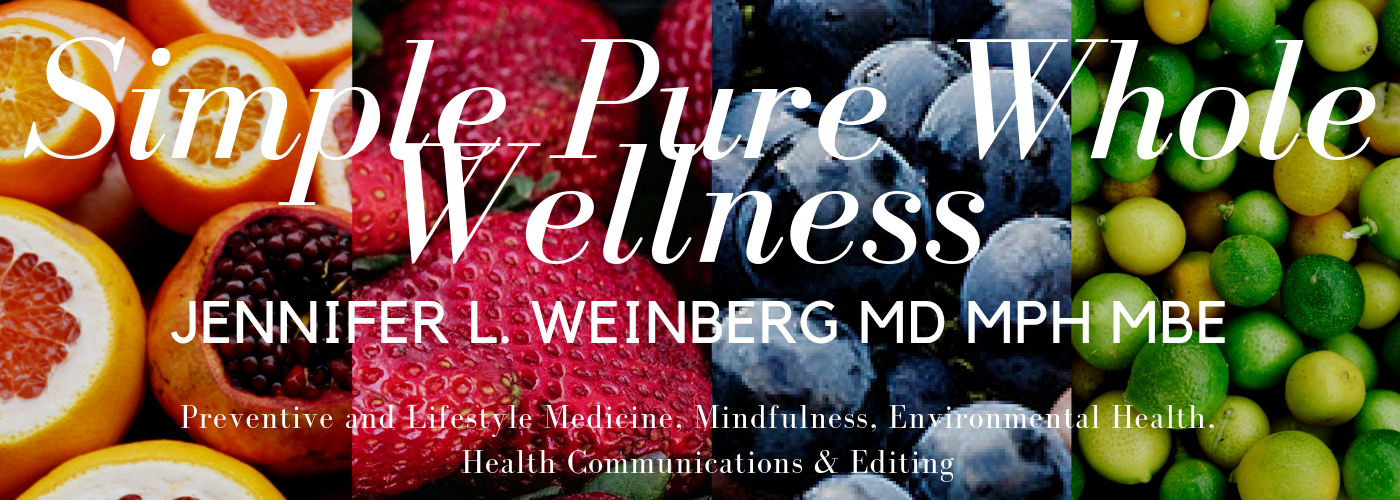
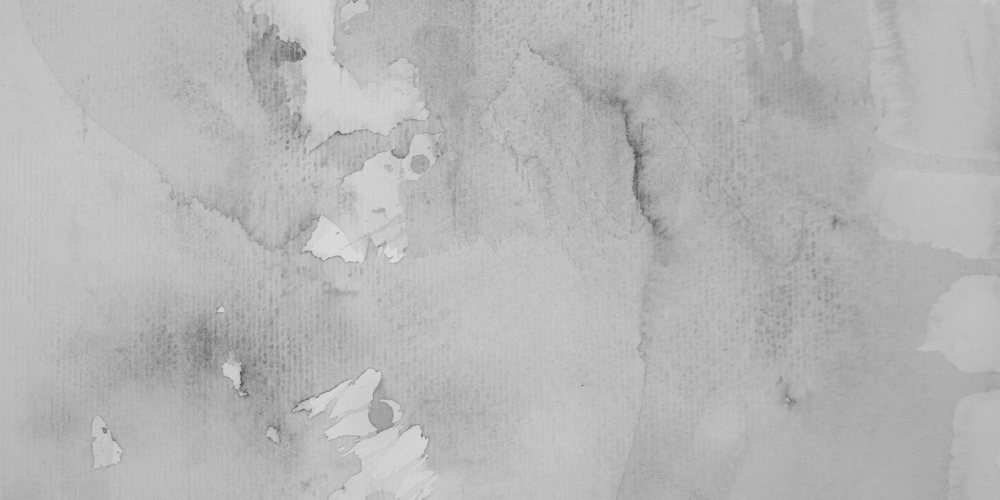
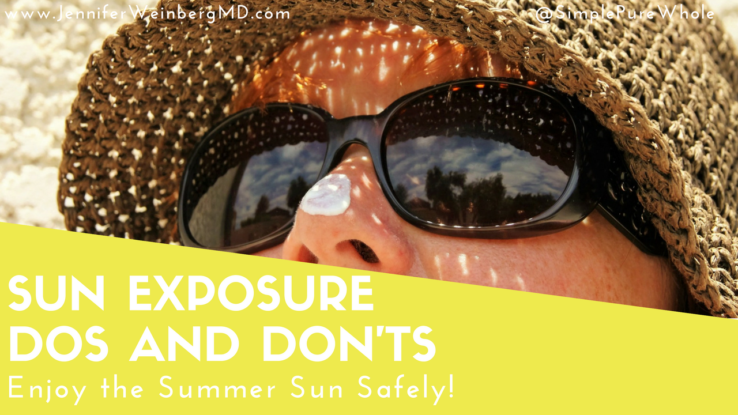

Comments